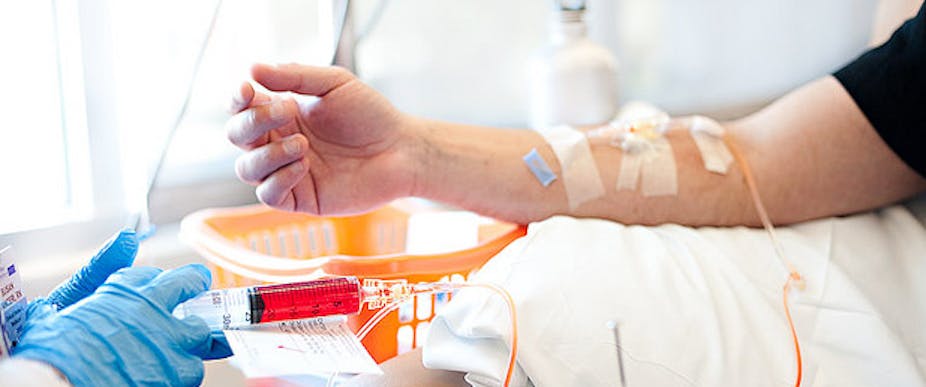It’s the pharmaceutical industry equivalent of the butterfly effect: a drug manufacturing plant in Ohio shuts down production after regulators on two continents uncover contamination problems. Suddenly, thousands of cancer patients worldwide - including Australia - find their access to a promising drug treatment halted.
Doxil belongs to pharmaceutical giant Johnson & Johnson, but is manufactured under contract by Ben Venue laboratories in Ohio, which has shut down its production line for nine months. Even if it gets back into regulators’ good books, the future for this drug’s supply is unclear, as Ben Venue has already signalled its plans to exit the contract manufacturing business “in a multi-year transition”.
The human cost of Big Pharma’s outsourcing problems is not confined to Doxil: the American Society of Health System Pharmacists reported shortages of 251 drugs in 2011, mainly generic injectable medications.
Outsourcing used to happen on an ad hoc basis, when big pharmaceutical companies were short of capacity. But in the past decade, outsourcing has become a central strategy. Consultancy Business Insights estimates contract production accounts for 40% of total annual drug manufacture: $20 billion to in-house production of $30 billion, and rising.
The pressures leading to outsourcing are similar to those that reshaped the automobile industry several decades ago – and just as unlikely to disappear.
One imperative for outsourcing is to find manufacturers on the cutting edge. This is the reason for outsourcing bio-pharmaceuticals, in which category Doxil loosely falls. The market for biologicals is growing fast, and Big Pharma does not always have the right production facilities, or available capacity.
Because these drugs require a highly specialised production line for relatively small quantities, they are vulnerable to production problems. Capacity cannot easily be found elsewhere, and retooling a different production line for Doxil would be slow.
This also means the pharmaceutical company is vulnerable to tough bargaining tactics on the part of the manufacturer, and one of those tactics could be delay.
For more traditional (non-biological) drug lines, the motive is cost-cutting. In-house production facilities do not always feel the same pressure to keep costs down as do external suppliers. With large drug batches, the pharmaceutical company can play several contractors against each other, and get very good prices.
In this industry - like others - manufacturing is slowly migrating to Asia, particularly for the production of generic drugs. This segment of the industry is suffering from excess capacity: as more of the new drugs are biologicals, more factories are closing down.
This squeeze is the source of supply problems in this segment: consolidations mean that drugs are made by a small number of companies, some of which are in financial distress. In 2007, contract manufacturer Inyx filed for bankruptcy, causing serious problems for several Big Pharmas.
After a decade or so of outsourcing, one could argue the core competencies of pharmaceutical companies are now research and development, helping drugs through the regulatory approval process, and marketing, rather than manufacturing.
The economics for drugs such as Doxil don’t stack up when you’re talking about 2500 patients in the US’ domestic market of 300 million, let alone Australia, where patients face one final source of shortages peculiar to this environment.
The federal government negotiates hard with the pharmaceutical giants, and obtains very advantageous prices. But this has implications: the remaining supplies of Doxil have been allocated to American, rather than Australian, patients.
What are the policy implications? For drugs that are very important, governments could impose penalties for supply failures. Or they could reduce their dependency by subsidising a second manufacturer. But in contrast to the largesse being thrown at the automotive sector, Canberra is unlikely to admit to having pockets deep enough for this.
Meanwhile, oncologists and their patients wait for the pharmaceutical industry shake-up to settle down, with no guarantees that all drugs will make their way back to the market.

